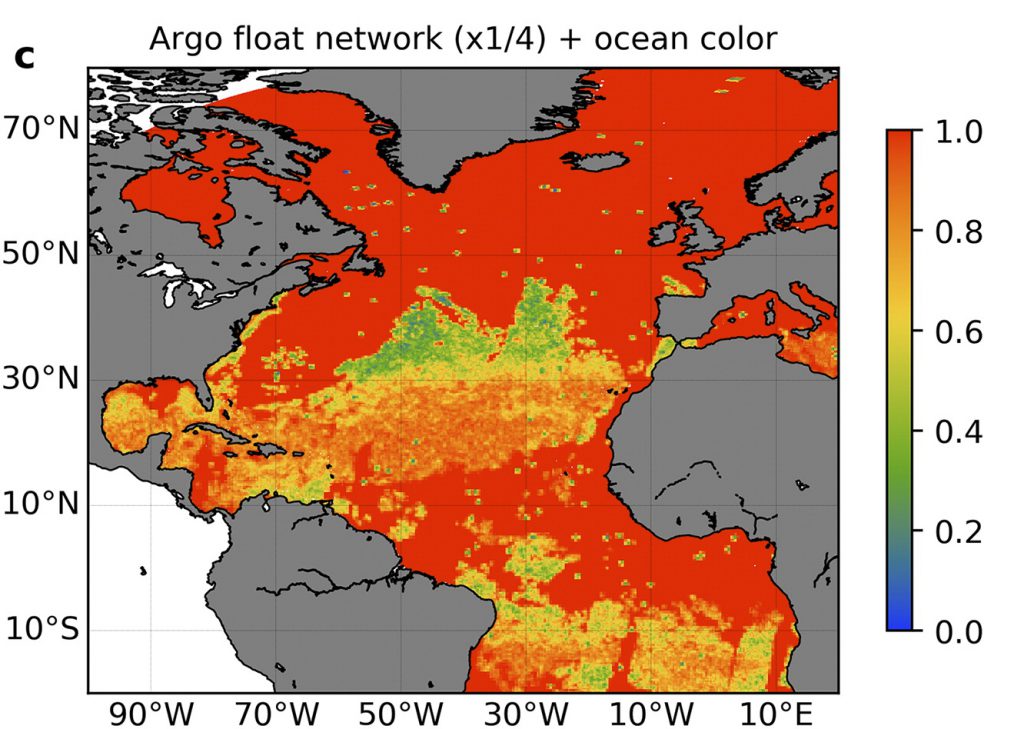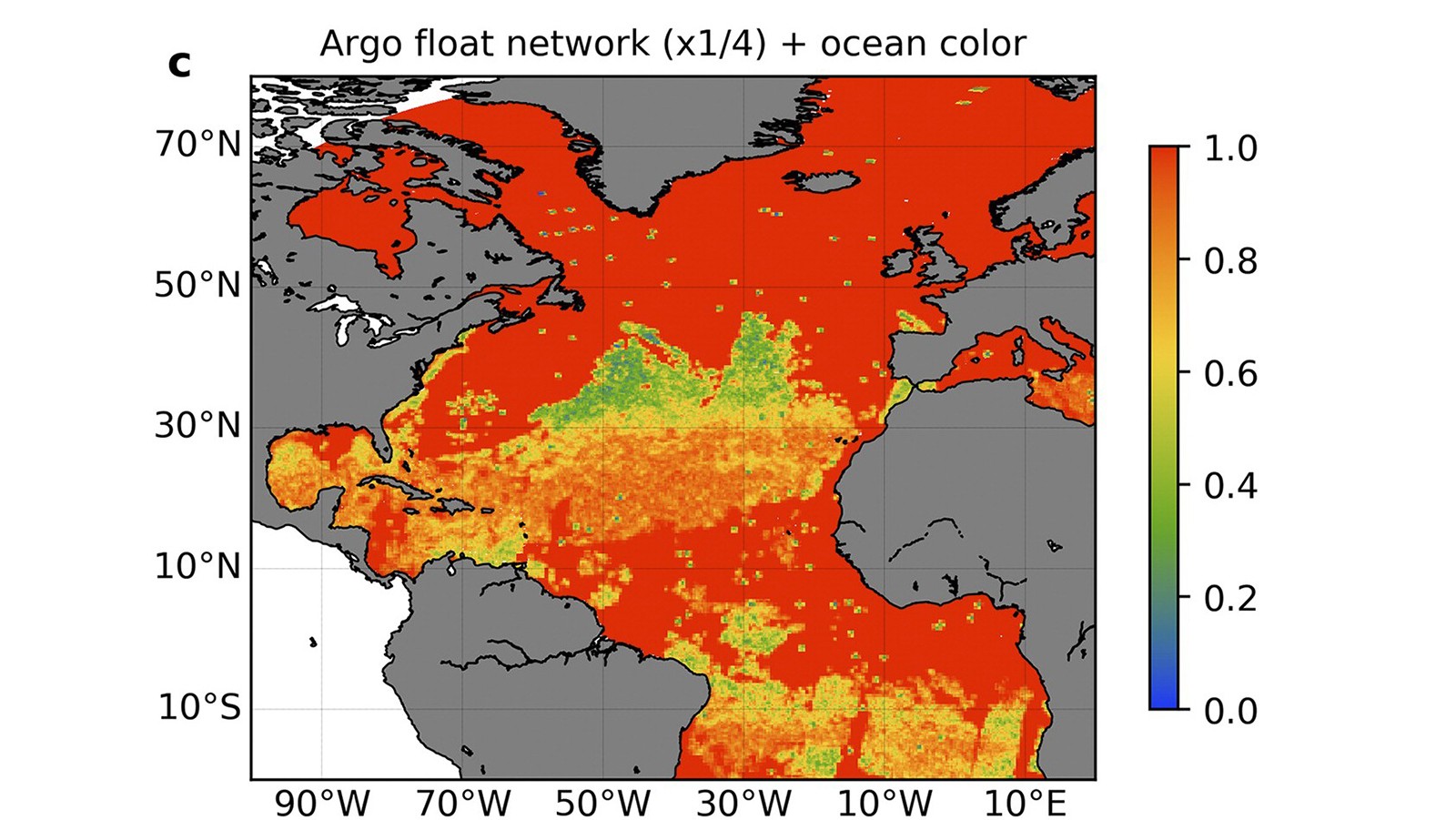Ocean observing systems such as Argo floats, drifting buoys, fixed moorings, and satellites provide core observations of physical ocean properties that support daily weather forecasts– one of NOAA’s core products. These critical observations also support studies and even the prediction of seasonal rainfall, drought, tornado activity, heat waves, and the drivers of regional sea level change.
Scientists are now looking to expand their observing capabilities to include the biology and chemistry of the oceans, currently available globally from ocean color satellites that measure chlorophyll, indicating algal blooms at the ocean surface. For biogeochemical variables, the global ocean observing system is still underdeveloped compared to ocean physics, delivering only scattered and uneven data coverage based on sparse research cruises, scattered autonomous vehicles and fixed moorings.
A recent paper in the Journal of Atmospheric and Oceanic Technology by AOML postdoctoral scientist Cyril Germineaud of the University of Miami’s Cooperative Institute for Marine and Atmospheric Studies and colleagues shows that in close synergy with ocean color satellites, a global array of biogeochemical sensors complementing the existing core Argo network could revolutionize our knowledge of the changing state of primary productivity, ocean carbon cycling, ocean acidification, and the patterns of marine ecosystem variability from seasonal to interannual time scales.

The study used numerical simulations of the ocean circulation and biogeochemistry to simulate new observations of chlorophyll to assess their impact on ocean state estimation. In particular, a novel technique allowed for an ensemble-based approach to compare various scenarios for configuring and deploying a network of biogeochemical sensors on the Argo platform, known as biogeochemical (BGC)-Argo floats. It was shown that an array size of 1000 BGC-Argo floats could fill gaps in chlorophyll data at the ocean surface in cloudy conditions, with additional improvements of estimates from depths of the upper ocean down to 150 meters.
